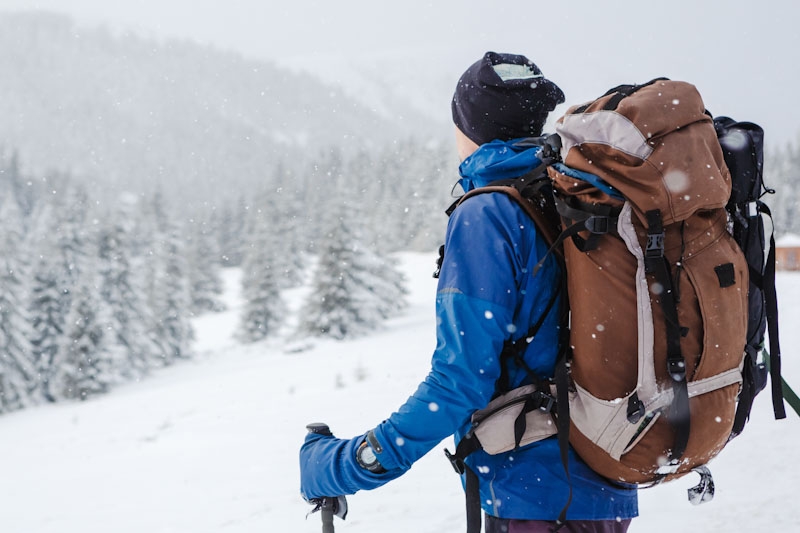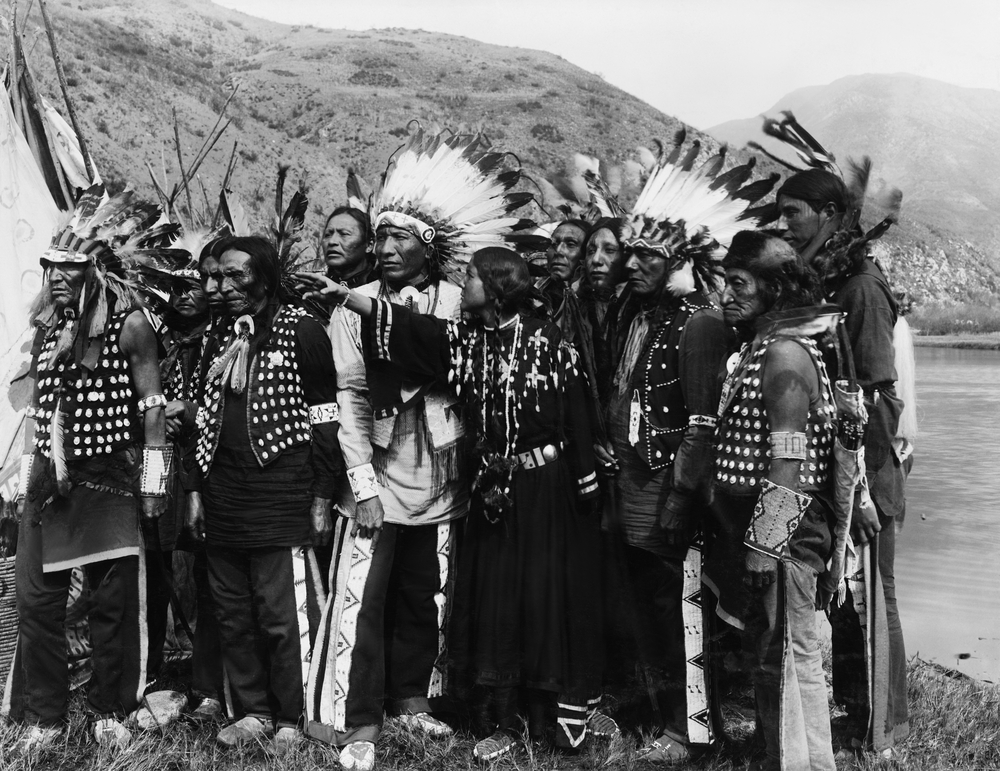The general consensus in the survival community today, is that we should bug in, rather than bug out, if at all possible. There’s a lot of good reason for this, starting with our home being a shelter, us having everything we own available to us and that surviving at home is much easier than surviving in the wild. Nevertheless, none of us should ignore the potential necessity of being forced to bug out. Should that happen, it will most likely be in the worst possible circumstance, with us having to deal with adverse weather on top of everything else.
Even with bugging out, we tend to apply a bit of an idealistic vision to survival. To most of us, bugging out is more of an extended camping trip, thinking that our bug out bags are going to supply all that we need. I’m not sure how that will work out for people, considering that most bug out bags only have three days’ worth of food in them. They’re really nothing more than a super survival kit, intended to help us get from home, to wherever we’re going. Once there, we need to have food, supplies, and better equipment to survive with.
In my mind’s eye, if I am ever forced to bug out, I expect it to be during bad weather. Maybe I see it that way, because storms and natural disasters have the potential of damaging our homes and communities to the point where bugging out is necessary. So, I expect that it will at least be rainy and more likely be in the coldest part of winter.
Using that as a baseline, I tend to look at survival from the viewpoint of expecting to have to deal with inclement weather. In order to be prepared for that, I assume that I’ll have to bug out in the midst of a major storm or in the midst of winter. If I’m ready for that, I should be ready for just about anything.
So, just what do we need to do different, in order to survive in the winter?
The Basic Survival Priorities – on Steroids
We all know the basic survival priorities of maintaining our body heat, having clean water to drink and having food to eat. Those same priorities exist in the winter, but even more so. It’s considerably harder to stay warm in the winter and food becomes an even bigger problem than it is in warmer weather. Don’t make the mistake of thinking of wilderness survival in the winter as just a camping trip, even simple things can turn deadly quick, if you’re unaware. What I want to do is take a look at these areas and what needs to be done in a survival situation in cold, wet weather.
Keeping Warm
The biggest challenge any of us will face, if we have to bug out in the wintertime, is keeping our bodies warm, so that we can maintain our core body temperature. Our bodies produce heat; but not enough for us to stand outside in cold weather. I’m not talking about being warm enough to be comfortable here; I’m taking about being warm enough to survive.
The first part of keeping warm in cold weather is wearing the right clothes. It is best to dress in layers, so that excess layers can be taken off, if you get too warm. The one thing you absolutely don’t want to do in cold weather is perspire. If you’re doing hard work and begin to perspire, that perspiration can freeze to your skin, drawing off heat, once you stop working. Always wear just enough clothes to keep you warm, without them keeping you hot.
Wool is the best material for winter clothing. Not only is wool a good natural insulator, but it’s the only fabric which maintains some insulating value when wet. Some fabrics or fabric combinations will cause your body to lose heat considerably faster, like up to 300 times faster, than standing there naked, if the clothing gets wet! On the other hand, wool will retain 50% of its insulating value when soaking wet. Because of the natural oils coating virgin wool, it sheds water easily, helping to keep you dry.
Keep moving, as much as possible, without overexerting yourself. When we move, our muscles burn sugar, producing heat. That’s our body’s major internal heat source, so it is critical in cold weather.
Shelter
Shelter is critical during cold weather, especially cold, wet weather. Emergency blankets and “survival tents” made of aluminized Mylar aren’t enough. Those are heat reflectors and while they might ultimately be part of yo9ur shelter, they can’t do the job alone. For that matter, a tent really isn’t enough on its own, even those which are considered to be four-season.
To make a good winter shelter, start by pitching a tent. Then cover the tent with boughs cut from evergreen trees to act as insulation. Cover that with aluminized Mylar emergency blankets, preferably the tougher, thicker kind. That provides both insulation and the heat reflection, helping to make it possible for the shelter to hold in more heat.
I highly recommend having a good, lightweight, backpacking sleeping bag as part of your bug out bag. I’m not sure why most preppers carry one, considering that backpackers have done so for generations. Don’t forget that you need to insulate the floor of your shelter as well, so that your body isn’t resting right on the ground. Your sleeping bag might get crushed down by your body weight, so you need insulation between that and the ground, so that you don’t lose all your body heat to the cold ground.
Fire
We all know that fire is an important part of survival, used for a number of different things, including helping to keep us warm. That’s obviously more critical in the winter, than it is in the summertime. But we need to realize that we’ll end up using a lot more firewood to keep that fire going in the winter, than what we’re used to, especially if we end up using pine, instead of hardwoods. Pine burns quickly and doesn’t produce as much heat as hardwoods do. On the other hand, it’s easier to cut and harvest.
There’s a lot to getting a fire going in wet weather. the first challenge is finding wood that is dry enough to burn. That requires looking in places where the rain and snow don’t reach well, like under overhanging boughs and embankments. Always check places like the underside of deadfalls, as the branches there are likely to be dry as well.
This is the one time I recommend using a chemical fire starter (fire accelerant) to get a fire going. If there’s anything that will be hard to find in the wilderness, it’s dry tinder for the fire. Using one of the commercial fire starters or a homemade one (like cotton balls and petroleum jelly) makes it easy to start a fire, even without tinder.
Placement of your fire is important as well. I recommend placing it as close to the entry of your shelter as possible, without causing a fire hazard. You want as much of that heat going into your shelter as possible and the further the fire is away, the less you’ll receive. Build a heat reflector out of stones or logs, across the fire from your entrance, to help get more of that heat inside, where it will do you some good.
Is Your Water Okay?
Water is one thing that shouldn’t be an issue in the wintertime; at least, not if its snowing. But just like any other water source you find; you can’t assume that it is safe to drink. Snow, like rain, forms around dust particles, which can have bacteria on the surface. Pasteurizing the snow, as you melt it (bringing it up to a minimum temperature of 158°F) will kill the bacteria and make it safe to drink.
One crazy thing about melting snow for water is that it can scald. You won’t see anything to indicate that it is scalded, but you will be able to taste it. To avoid this, make sure you stir the snow while it is melting. That snow will reduce to about 10% of its volume, when it melts; so, make sure you have a reserve supply of snow to melt.
You don’t want to drink cold water anyway, as that puts the requirement on your body to heat that water up, expending energy that your body needs for other things, like keeping warm. Drinking warm water helps keep you warm, while drinking cold water cools you down.
The Importance of High-Energy Food
Food provides our bodies with energy, as well as needed nutrients. But for the moment, we’re more interested in the energy, than the nutrients. Our bodies “burn” simple sugars in order for our muscles to move and produce heat. Those simple sugars come from complex sugars and carbohydrates, even complex carbohydrates. A large part of what our digestive system does is extract those carbohydrates from our food and convert them to the simple sugars that we need.
With that in mind, having enough high-energy food available is critical to staying warm. It requires more work for our bodies to extract the necessary sugars from the fat stored in our bodies, than it does to extract it from food. While our bodies will do that, the process is slower than converting carbohydrates to energy. Besides, all that extra body fat many of us are carrying around acts as insulation, helping to protect us from hypothermia.
There is little chance of finding the necessary carbohydrates, fats, or sugars in nature. Game meat has little in the way of fats and wild plants don’t have a lot of carbohydrates. Therefore, if we are going to survive in the wild, in the wintertime, we really need to bring food with us or have a cache prepared with sufficient food.
Watch Out for Wild Animals
Wild animals, specifically carnivores, can be especially dangerous in the wintertime, as they will likely be hungry and looking for food. Other than bears and racoons, I don’t know of any wild hunters who store body fat and hibernate during the winter. At the same time, the animals those carnivores generally hunt for won’t be moving around a lot, making food scarce for them.
Hungry carnivores are just as likely to look at you and I as a meal, as they are a deer, assuming they are large enough to hunt and kill us. Bobcats and coyotes may not be as likely to attack humans, but wolves and mountain lions will.
This means we must be alert, watching out for these animals. As wildlife, they are accustomed to moving quietly and catching their prey unawares. So, not only do we need to be alert as to their presence, we also need to be quick to react, should they come into camp. There may not be any second chance against a mountain lion, if we don’t manage to get our first shot in, before they leap.









































































Bill,
As always great article, timely and thorough, thank you.
Years ago I converted to sleeping off the ground in hammocks. Being a backpacker, humping everything hundreds of miles, it first was in a good quality sleeping bag in a simple lightweight hammock. I converted to Army Bivouac canvas hammocks, essentially a dinosaur in the backpacking world. But, with zippered mosquito netting, extensive rain flys and the sturdiness that comes with canvas, it was well worth suffering carrying that weight. I’ve camped in the dead of winter, thundering rainstorms and the heat of desert summer and was always able to adjust my environment to be happily hanging there dry, warm and comfortable. It’s like sleeping in a hanging tent with out worrying about water and critters rolling in on you.
There were many instances of utter chaos usually in the dead of night from sleeping on the ground. One time I was sleeping on the ground hiking by the Au Sable river in Michigan during summer and woke up in the middle of the night to discover that it had rained somewhere upstream and the river overflowed its banks. I woke up to realize I was laying in about 6″ of water that was the river! I laugh now about it, but the potential for drowning I’d rate at a 10 if I hadn’t woken up in time.
I love my hanging home and other than the weight recommend it highly,
One other recommendation to help stay warm, especially at night when trying to sleep: Eat your largest meal just before going to bed. Your body will create more heat while digesting the food, hopefully high energy foods .Something I learned in the Marines.
FIRTS OF ALL LEARN HOW TO START A FIRE
What are some suggestions you have for starting a fire without matches, lighters or accelerant?
Find sap balls on evergreens and conifers. Cut under bark to the punky wood or resin bearing sap woods. Very flammable. Pine needles burn like crazy.
Great suggestions, thank you!